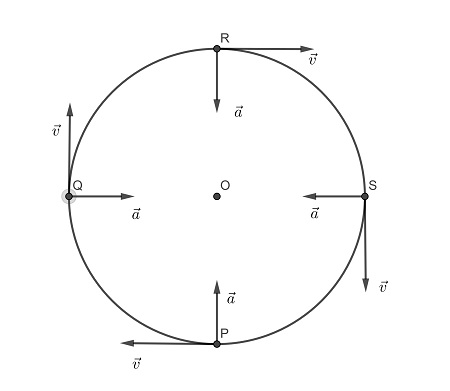The question says that the particle moves in a circular path at constant speed
⇒ The particle is describing a uniform circular motion
⇒ Tangential acceleration = 0
Now check the options
A) is correct because velocity is a vector quantity and it changes when there is a change in direction.
B) is incorrect because in uniform circular motion tangential acceleration is zero and the acceleration is acted only towards the radial direction and the velocity is tangential.
C) is correct because in uniform circular motion the acceleration acts only along the radial direction which is an = w2 r .
D) is incorrect because if we take radial acceleration (an) constant then the velocity of particle (in terms of radius of curvature will be v2 = r * an) will decrease.
E) is incorrect because Tangential speed is proportional to the radius , that means by decreasing the radius the tangential speed will also decrease but it will never decelerate the particle.
F) is correct because we don't have mass in the relation of speed (i.e v2 = r * an).
 THANK YOU
THANK YOU 